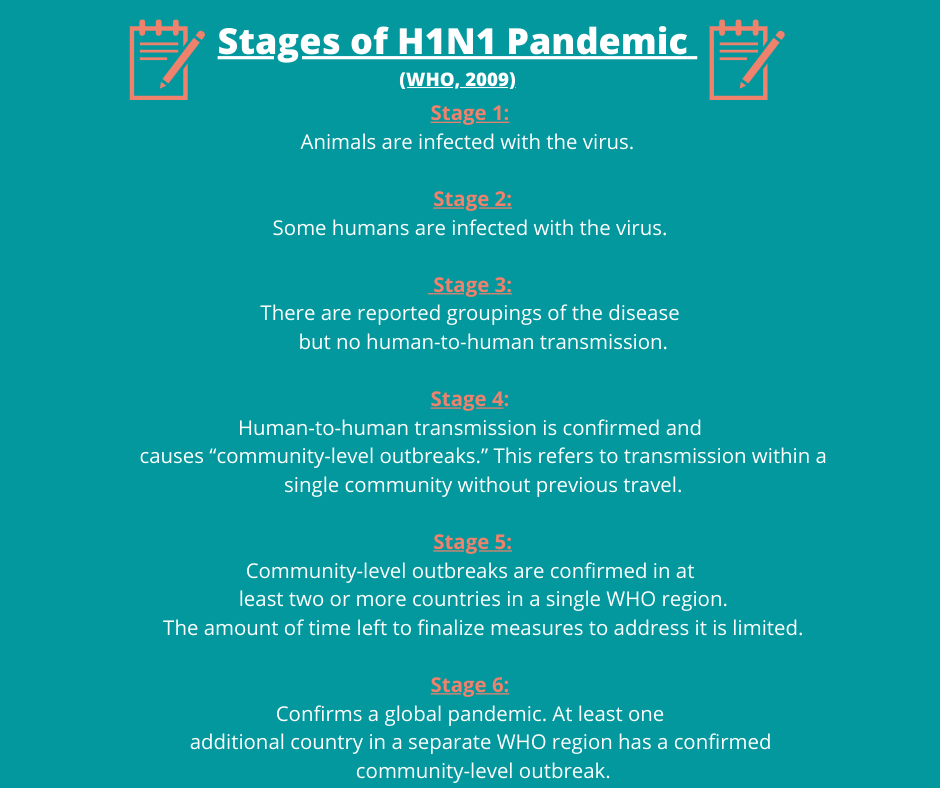The World Health Organization says the threat of COVID19 becoming a pandemic is “very real.” Yet, it was clear from their news briefing on Monday that they have been careful not to call the virus by the term.
Despite the virus’ growing reach across the globe, the WHO said they fear people will give up fighting the virus if it is named a pandemic. One tends to wonder if the vague definitions we have of “pandemic” itself are partly to blame.
Dr. Michael Ryan of the WHO Health Emergencies Programme said at the briefing that there is no globally “accepted definition” of a pandemic, but a key marker would be an uncontrollable virus.
He said the WHO does not believe the world is at that stage yet and pointed to successful control of the virus in Singapore and China as examples.
“The bottom line is we are not at the mercy of the virus.” WHO director-general Tedros Adhanom Ghebreyesus said at the briefing. He referred to the virus as an “uneven epidemic” instead.
The 2009 H1N1 influenza outbreak was named a pandemic but caused debate over an accepted definition, according to the Journal of Infectious Diseases. There was confusion if “explosive transmissibility” was enough to make it a pandemic. Others pointed to the severity of the virus as being a more important factor.
At the time, it was agreed that a pandemic could be considered simply as a large epidemic, but that definition was still vague.
The Journal of Infectious Diseases looked at historical pandemics in hopes to find common ground but found that each disease was different. The only common feature among them was a large global impact.
With no single, agreed upon definition, the WHO outlined six stages of a pandemic in 2009 for the H1N1 outbreak:

By looking at the early descriptions in stages 5 and 6 above, it appears that COVID19 has satisfied a community-level spread in more than two recognized WHO regions. The number of people infected with the virus is beyond 110,000 across the globe. There are over 100 countries which have confirmed cases of COVID19 and more than 3,800 have died from the virus worldwide.
But is this the only factor necessary to label COVID19 a pandemic if WHO won’t recognize it yet?
In 2010, the WHO defined a pandemic as “the worldwide spread of a new disease” in which “most people do not have immunity.” A comparison was made between the common flu and H1N1. With the case of the common flu, people who are infected can recover without treatment. The flu tends to be more severe in the elderly. With H1N1, there were severe cases seen in all age groups.
Currently, the most severe cases of and most deaths from COVID19 are also being seen in older populations. A COVID19 infection causes generally mild illness in most of the population.
The reminder that there is no immunity to COVID19 was echoed in the WHO news briefing on Monday. COVID19 has spread far and fast, but the level of severity of the disease may play a role in how WHO will label it.
In their 2017 Pandemic Influenza Risk Management report, the WHO still did not have a recognized definition of a pandemic, but they shortened their phases:
- Interpandemic phase (the time between pandemics)
- Alert phase (a new type of influenza is identified in humans)
- Pandemic phase (the disease spreads globally)
- Transition phase (the global risk of the disease decreases)
A recognized definition of a Public Health Emergency of International Concern (PHEIC) is also available in that report. A PHEIC is the spread of a disease internationally which may need an organized international response. COVID19 was declared a PHEIC on January 30, 2020.
By definition, epidemics, PHEICs and pandemics sound very similar. Even the term “epidemic” has confused researchers in the past, who have called for better definitions to show risk levels better.
Put simply, an epidemic is described as a “critical number” of cases of an illness in a region, while a pandemic is the unexpected rise of a disease globally. A PHEIC is announced by the WHO when they need an international, organized effort against the spread of a disease causing a global health risk.
The WHO’s statements on Monday and what we know about pandemics suggest a declaration could be coming. What WHO is watching now is how much we can control COVID19 and how immune we are to it, because the outbreak has already reached a concerning international level. That in itself was enough to consider “pandemic,” a term that has been loose for a long time.